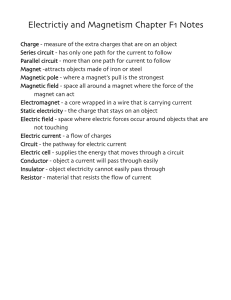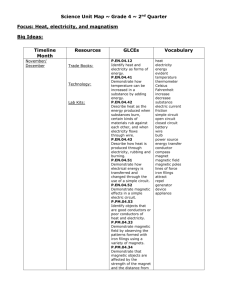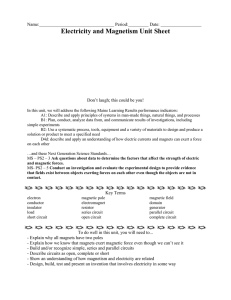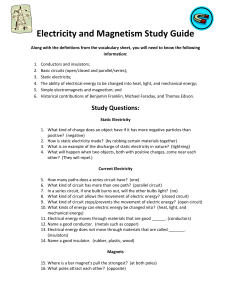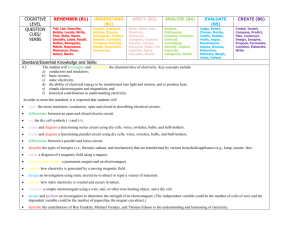are conductors (metals). Insulators (rubber,
advertisement
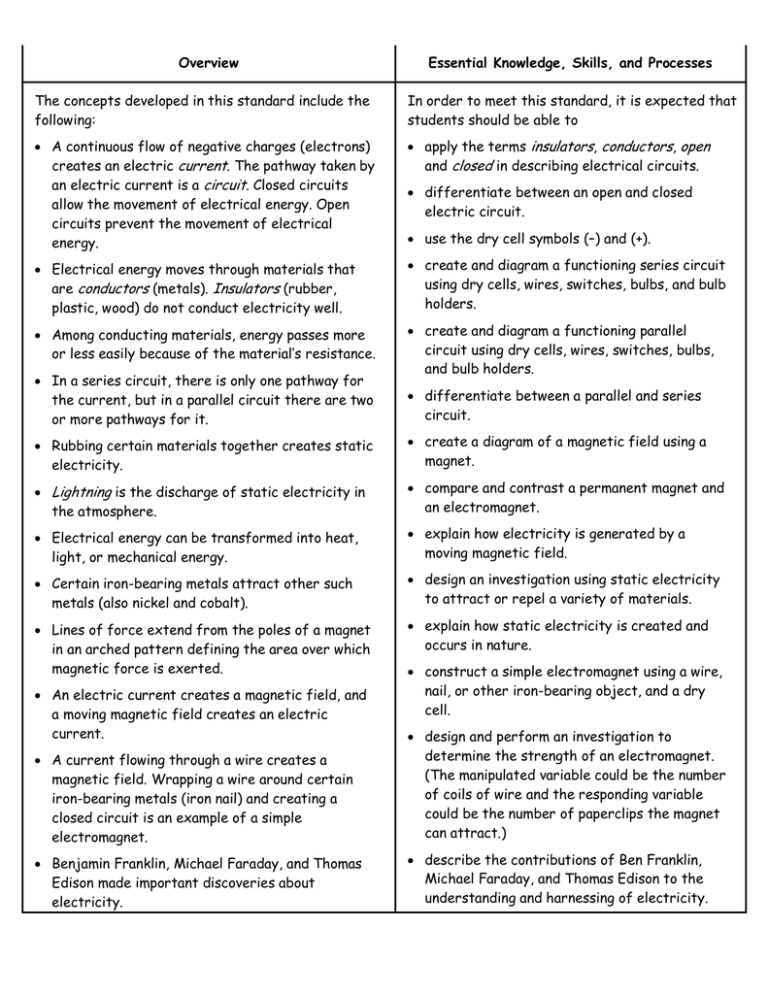
Overview Essential Knowledge, Skills, and Processes The concepts developed in this standard include the following: In order to meet this standard, it is expected that students should be able to A continuous flow of negative charges (electrons) creates an electric current. The pathway taken by an electric current is a circuit. Closed circuits allow the movement of electrical energy. Open circuits prevent the movement of electrical energy. apply the terms insulators, conductors, open and closed in describing electrical circuits. Electrical energy moves through materials that are conductors (metals). Insulators (rubber, plastic, wood) do not conduct electricity well. create and diagram a functioning series circuit using dry cells, wires, switches, bulbs, and bulb holders. Among conducting materials, energy passes more or less easily because of the material’s resistance. create and diagram a functioning parallel circuit using dry cells, wires, switches, bulbs, and bulb holders. In a series circuit, there is only one pathway for the current, but in a parallel circuit there are two or more pathways for it. differentiate between an open and closed electric circuit. use the dry cell symbols (–) and (+). differentiate between a parallel and series circuit. Rubbing certain materials together creates static electricity. create a diagram of a magnetic field using a magnet. Lightning is the discharge of static electricity in the atmosphere. compare and contrast a permanent magnet and an electromagnet. Electrical energy can be transformed into heat, light, or mechanical energy. explain how electricity is generated by a moving magnetic field. Certain iron-bearing metals attract other such metals (also nickel and cobalt). design an investigation using static electricity to attract or repel a variety of materials. Lines of force extend from the poles of a magnet in an arched pattern defining the area over which magnetic force is exerted. explain how static electricity is created and occurs in nature. An electric current creates a magnetic field, and a moving magnetic field creates an electric current. construct a simple electromagnet using a wire, nail, or other iron-bearing object, and a dry cell. A current flowing through a wire creates a magnetic field. Wrapping a wire around certain iron-bearing metals (iron nail) and creating a closed circuit is an example of a simple electromagnet. design and perform an investigation to determine the strength of an electromagnet. (The manipulated variable could be the number of coils of wire and the responding variable could be the number of paperclips the magnet can attract.) Benjamin Franklin, Michael Faraday, and Thomas Edison made important discoveries about electricity. describe the contributions of Ben Franklin, Michael Faraday, and Thomas Edison to the understanding and harnessing of electricity.
